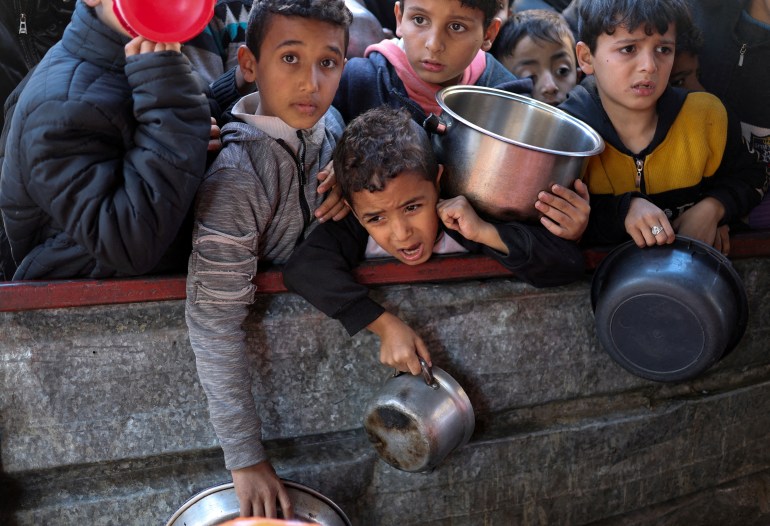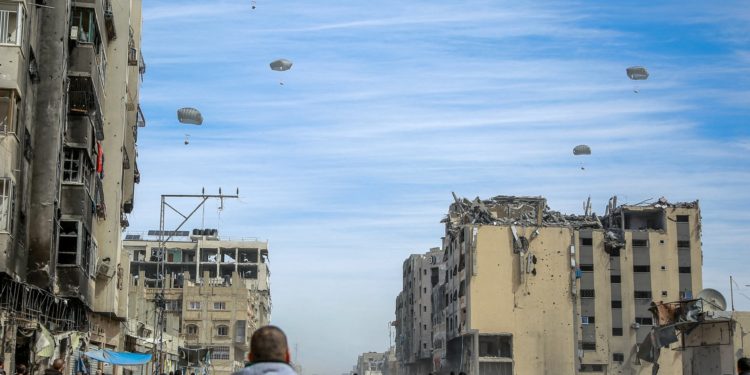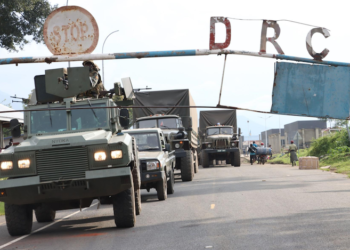By AL JAZEERA
Five people were killed and several injured after a parachute landing a humanitarian airdrop failed to open, bringing a pallet crashing down into a crowd of people waiting for food north of Gaza City’s Shati refugee camp.
The government media office in Gaza confirmed the casualties after the incident occurred on Friday, lambasting the “useless” airdrops as “flashy propaganda rather than a humanitarian service” and calling for food to be allowed through land crossings.
“We previously warned it poses a threat to the lives of citizens in the Gaza Strip and this is what happened today when the parcels fell on the citizens’ heads,” it said in a statement.
Reporting from Rafah, Al Jazeera’s Hani Mahmoud said that people are experiencing “a tragedy” in the north of Gaza.
“Not only are they confronted with the lack of food and medical supplies, but as they wait for packages of food, they are either targeted by the Israeli military or killed by a non-functional parachute,” Mahmoud said.
The deaths occurred as famine stalked the enclave, with the United Nations Office for the Coordination of Humanitarian Affairs reporting last month that at least half a million, or one in four people in Gaza, face famine.
It highlighted the problem of getting desperately needed humanitarian relief into Gaza amid Israeli restrictions.
UNRWA, the largest UN agency in Gaza, says Israeli authorities have not allowed it to deliver supplies to the north of the strip since January 23.

The World Food Programme, which had paused deliveries in Gaza because of security concerns, said the military forced its first convoy to the north in two weeks to turn back on Tuesday.
In response, a number of countries – including the United States, Jordan, the United Arab Emirates and Egypt – have conducted airdrops, which have been criticised by aid agencies as a costly and ineffective way of delivering food and medical supplies.
On Wednesday, the WFP said that the controversial method should be considered “a last resort”. By way of contrast, it said that the week’s airdrops had only delivered six tonnes of food, while a failed 14-truck convoy would have brought 200 tonnes of food to people.
#Airdrops are only a last resort to reach Northern Gaza. Road routes are the only way to bring in the large quantities of food desperately needed to avert #famine.
For comparison:
🪂 This week’s airdrops = 6 tons of food
🚛This week’s failed 14-truck convoy = 200 tons of food pic.twitter.com/xkR3ZfDgmt— WFP in the Middle East & North Africa (@WFP_MENA) March 6, 2024
On Friday, Juliette Touma, UNRWA’s communications director told Al Jazeera, “There is an easier and cheaper way to bring in much-needed supplies into the Gaza Strip … That is via the road including sending more trucks from Israel into the Gaza Strip.
“When there is a political will there is a way,” she said, adding that, so far, desperately needed supplies have not been cleared fast enough and “there needs to be much more” going into the strip.
Friday’s disaster struck only a day after US President Joe Biden announced a complicated workaround to build a temporary pier off Gaza’s coast to deliver aid, a move criticised as an attempt to divert attention from the looming famine and Israel’s consistent blocking of assistance to the enclave.
British Foreign Secretary David Cameron said that the United Kingdom would be participating in the project, but said it would “take time to build”.
While welcoming the development, he nevertheless urged Israel to open its own port of Ashdod in the meantime.
“We need to make a difference right now,” he said.
Meanwhile, a maritime corridor delivering aid from Cyprus to the besieged enclave – a collaboration of a number of partners, including European countries, the US, and the UAE – could be established as soon as this weekend, according to European Commission President Ursula von der Leyen.







Discussion about this post